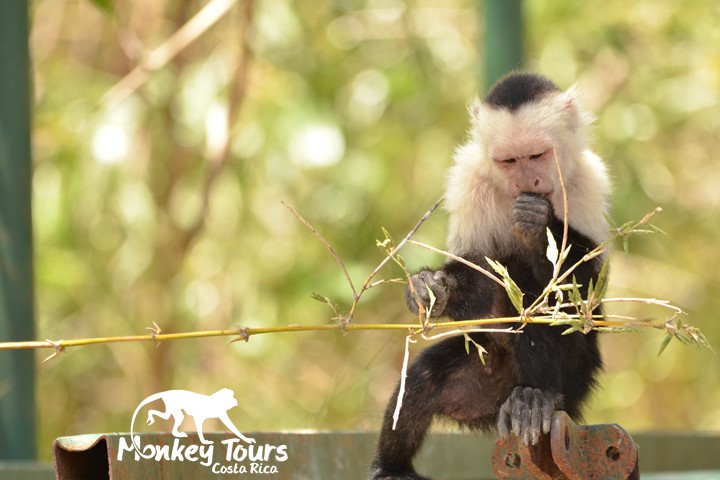White-faced or Capuchin Monkey of Costa Rica
The White-faced or Capuchin Monkey is also known for the common names of the White-headed Capuchin, the White-throated Capuchin and Carita Blanca in Spanish.
Distribution
Capuchins are found in Central and South America. They cover an area from Honduras to Colombia and Ecuador. Capuchins inhabit deciduous forest, evergreen forest, wet and dry tropical forest, mangrove swamp and montane forest. Some of the places they can be observed in Costa Rica include Barra Honda National Park, Arenal Volcano National Park, Corcovado National Park, Children’s Eternal Rainforest and Braulio Carrillo National Park.
Mating & Reproduction
Mating season generally occurs from June to October in the rainy season. A male Capuchin will commonly mate with multiple females in a social group. Males copulate in a matter of minutes, but gestation lasts as long as 6 months. The female will then give birth to one individual and in some cases twins.
The young ride on their mother’s backs for about 6 weeks, and reach a state of independence by 3 months. The young do not wean, however, until 6 to 12 months. Many of the monkeys in the group take turns taking care of the young, and males engage in child rearing.
Behavior
White-faced Monkeys are omnivorous. They consume mostly fruit, but they also eat insects, small vertebrates, leaves, flowers and nectar. They are arboreal and diurnal, and forage for their food in the forest canopy. They adapt to a variety of environments quickly, and it is believed by conservationists that they are more likely to survive habitat deforestation with greater success than some other species.
Females spend much of their lives in the same social group, but males will change their social group a number of times. In terms of hierarchy, males are dominant followed by females and children.
Miscellaneous Info
Capuchins are considered second only to Spider Monkeys in terms of intelligence among new world monkeys. They rub a number of plants into their fur to discourage insects such as ticks and mosquitos from feeding on their blood. They also use tools in defense and as a means to forage for food.
Where to see it in Costa Rica: Barra Honda National Park, Arenal Volcano National Park, Corcovado National Park, Children’s Eternal Rainforest, Braulio Carrillo National Park
Diet: fruit, insects, small vertebrates, leaves, flowers, nectar
Migration Pattern: males migrate between social groups
Habitat: deciduous forest, evergreen forest, wet & dry forest, mangrove swamp, montane forest
Size: length=335-443 mm weight=3.9 kg tail=551 mm
Species: Cebus capucinus

